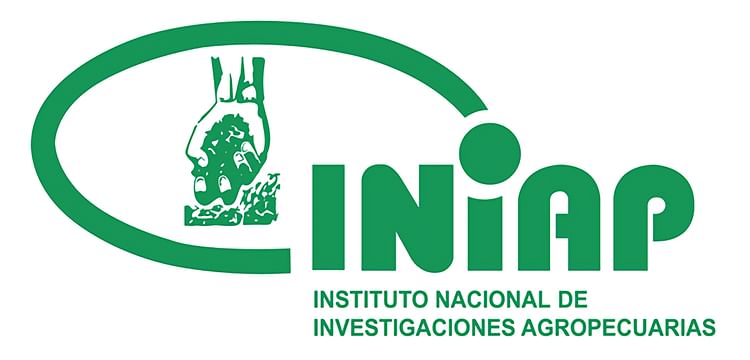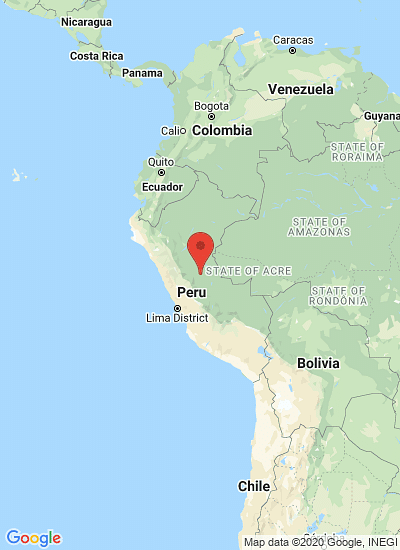Farmers without protective gear apply fungicides to control late blight in Huasahuasi in Junín, Peru.
Low-tech tool helps fight potato late blight
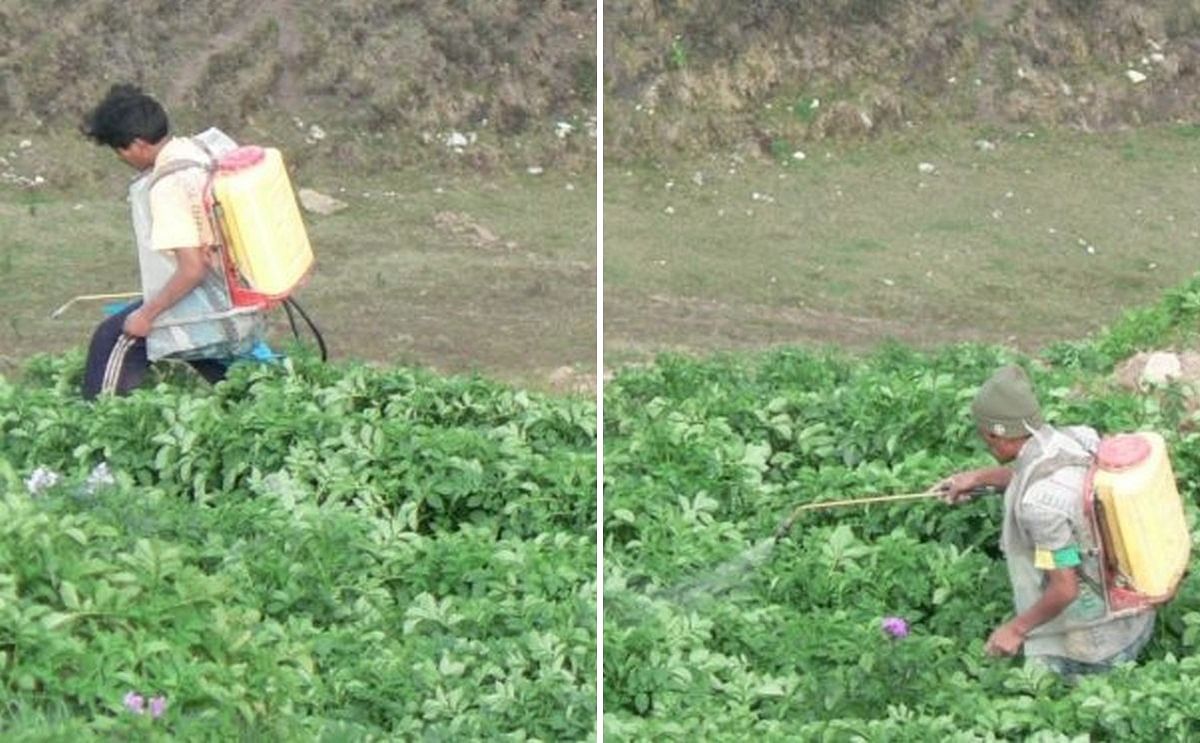
Late blight is the most destructive potato disease in the world. It affects all potato producers (small-scale, commercial, seed producers, even urban producers), and the annual losses in developing countries are estimated at EUR 10 billion. Late blight can attack many varieties of potatoes and most farmers use large quantities of fungicides to control this disease.
The fungicides can cause environmental damage as well as human health problems when they are misused since many farmers do not use protective gear that would prevent contact with this type of pesticide. So any technology that optimizes fungicide use to control late blight represents significant progress for potato producers.
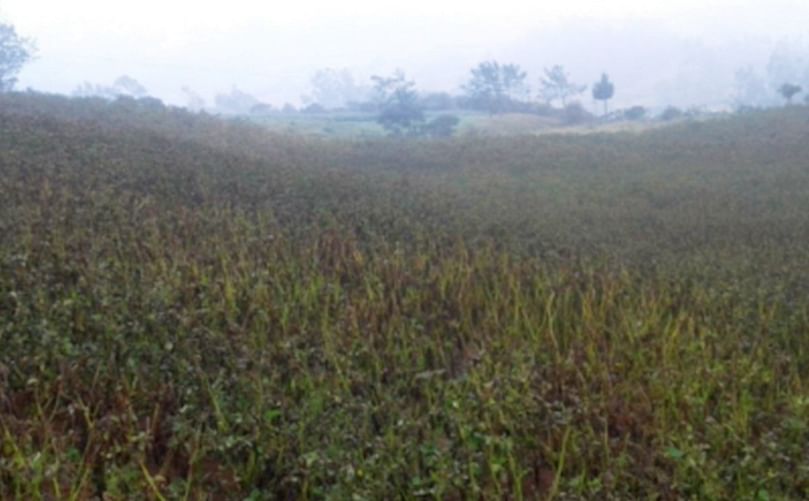
Yungay potato field severely affected by late blight in Chota, Cajamarca, Peru.
Development of the tool was based on three questions farmers need to answer when they are considering using fungicides:
- When do I start to apply the fungicide?
- Which fungicide should I use?
- How often should I apply it?
Answering these questions is more complicated than it appears. Multiple factors are at play. Many farmers in developed countries address these questions with the help of decision-making support systems, which use environmental data from weather stations.
The data is uploaded through the Internet to then be analyzed. Alerts can be issued and sent via text message to farmers who should initiate the application of fungicides.
However, due to the low coverage of the Internet and cell phones in the Andes as well as extreme environmental variation, these systems are impractical there and in other tropical zones. The CIP tool is called disc tool for potato late blight management.
Unlike the systems used in developed countries, the CIP tool is printed on cardboard and does not need the Internet or batteries.
Yet it enables integration of the most important factors in the decision on whether to use fungicides: How resistant is the potato variety of concern? The number of days of rain last week? The number of days since last fungicide application?
Taking these three factors into consideration, the tool helps farmers decide when to initiate fungicide application, which fungicide to use, and how often to apply it.
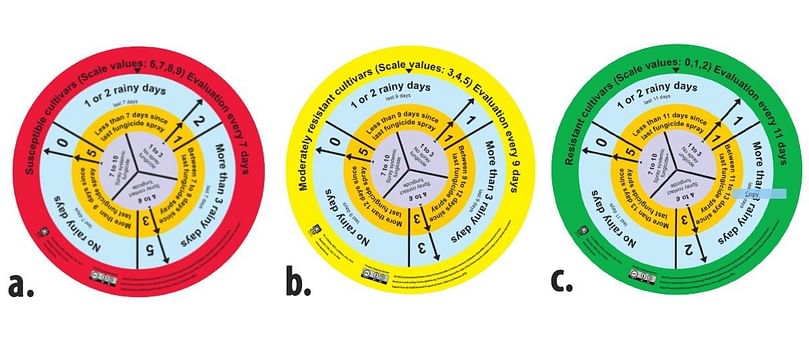
Disc tools for potato late blight control: a) the red disc is for susceptible varieties; b) yellow for moderately resistant varieties; and c) green for resistant varieties.
Evidence of the disc tool’s effectiveness has grown over the last five years in 11 field experiments in Peru and Ecuador. In addition, a randomized controlled trial was conducted in Carchi (Ecuador) in which 150 farmers received training in how to apply these tools and their results were compared with management by another 150 farmers in the same zone.
On completion of the study, the successful results were clear. The farmers who followed the disc tools’ recommendations used fewer fungicides, had reduced production costs, and obtained equal or better harvests compared with the farmers who did not use the disc tools.
William Paredes, a farmer in Huambaló, Tungurahua, Ecuador:
“I want to improve my product; my compañeros and I, we all want to improve our product. The best thing that has happened to me is that now I understand better how to manage pesticides. We used to buy supplies and apply them by eye.”To attract young farmers, CIP and the National Institute for Agricultural Research (INIAP) of Ecuador have created a couple of disc-tool-based mobile apps.
“Now we always measure and use only the precise amount needed. We used to apply a few anti-blight products together; now we apply one at a time and change to another in the next application. This new method is important for health and health is essential for work and for a better harvest at a lower cost.”
The idea is that farmers can use an app on their cell phone, without accessing the Internet, to decide whether a particular potato crop needs an application of fungicide, in accordance with the specific variety as well as local environmental conditions.
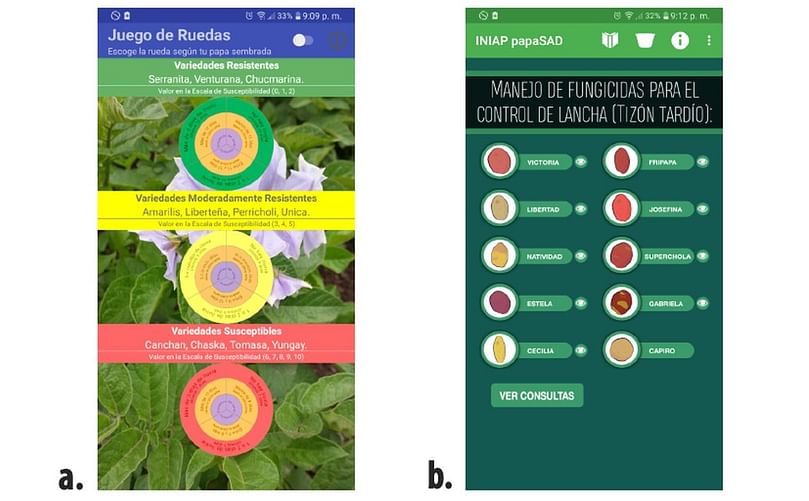
Mobile apps to help farmers manage potato late blight: a) disc tools; and b) INIAP PapaSAD, based on original disc-tool panels.
Materials previously developed by CIP can be useful in implementing these training programs. Finally, the disc tools can be adapted to other regions. It is important to know each variety’s resistance to late blight and then the disc tools should be tested under local conditions, to make adjustments, if necessary, in coordination with local experts.
Oscar Ortiz, Research Director at CIP:
“I am proud to see that after several years of brainstorming on how to design a simple decision-support tool that farmers can use to control potato late blight.”
“The idea has materialized in an innovative tool that can be disseminated to farmers in other regions around the world.”


